Every now and again I feel a little overwhelmed with digital. While an amazing space to innovate, sometimes, like with any other platform, the churn and burn can feel mundane and run-of-the-mill. And having worked in the space for almost 10 years now, while I’ve seen a lot change, some tried and tested things still remain, and can start to feel a little stagnant.
But really, the digital landscape is so vast and ever-changing, that the sky is truly the limit. The only thing ever really stopping us is lack of imagination (and perhaps resources and budgets in some instances…).
So I decided to re-inspire myself. And here are some top notch digital campaigns in the charity space in the last year that I came across to help me. Some you might have already heard of, some not, but all inspirational and aspirational in this space.
Unicef: #KidsTakeOver
I’ve been hearing it for the last few weeks since the FIA Conference – everyone is going gaga over chatbots – those fun little AI 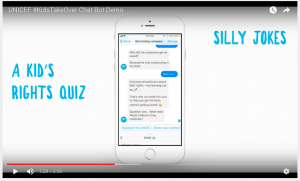 friends who conduct automated conversations. But there was one charity who used it pretty superbly in November last year.
friends who conduct automated conversations. But there was one charity who used it pretty superbly in November last year.
For World Children’s Day on 20 November, Unicef launched #KidsTakeOver using a Facebook chatbot. It was a fun endeavor that was rolled out across 11 different countries and in five languages, where kids of the world were the chatbots talking to their adult counterparts. The purpose was speak directly to the donors and supporters and help them realise that they needed to do more to fight for children’s rights, save children’s lives and help them live up to their potential. It was only one part of the big takeover by kids across different digital channels, but definitely one of the most engaging and out-of-the-box ones.
Check out the video of how it went down here.
Be the Match: Be The Guy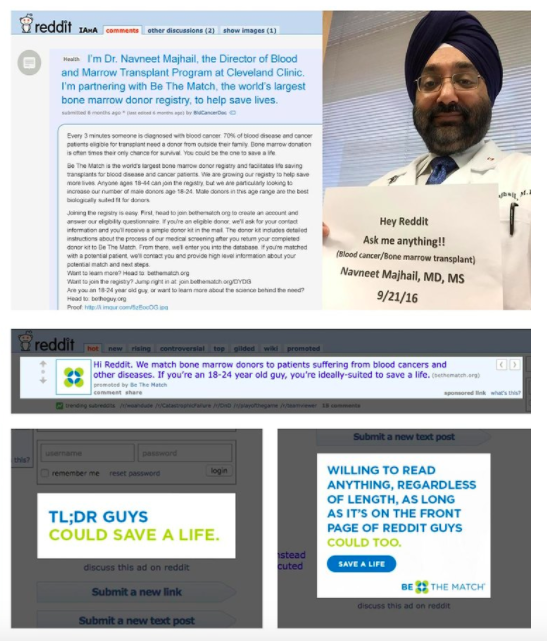
Young donors and supporters of any kind are hard to tap into. And for Be The Match, a charity focused on saving lives through bone marrow donations, the coveted young donor (in the literal sense) was the focus of their “Be The Guy” campaign. The campaign shifted the message from cause-centric to donor-centric, empowering men to save a life by signing up to the registry. Best still, it used clever creative and digital placements across Reddit and other innovative channels, where the target audience spend most of their time.
The results speak for themselves:
- 280% increase in 18-24-year-old males
- 17,974 new donors acquired.
- 212 million total media impressions
- 970% increase in total direct traffic.
Street League: Impact Dashboard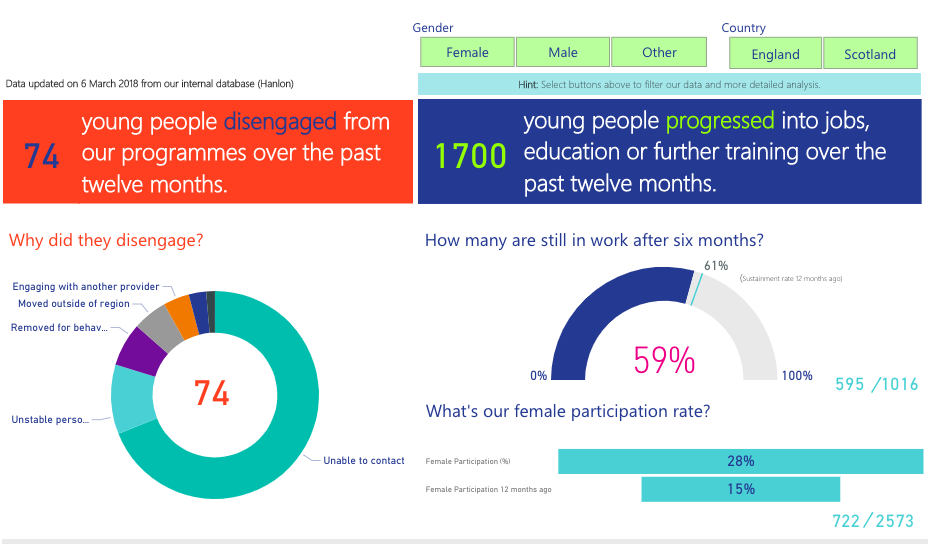
Every donor wants to know their money is going, and every charity should be transparent about this. Street League took this a step further by creating a dashboard on their site to show the impact in real time.
Street League’s Impact Dashboard is an interactive tool using a live dataset from the past 12 months, which is updated monthly and shows exactly how the charity is doing and where the money goes. A tangible way to really show your impact to your supporters – current and future.
Blue Cross: Pet & Tap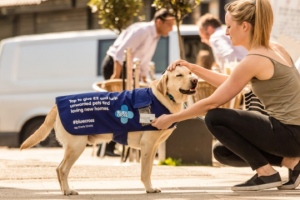
Pat a dog, make a donation. Quite simple. In the UK, Blue Cross integrated contactless payment during their events across the UK, attaching the contactless payment to the dog’s jackets. The result was more donations, keeping up with consumer trends, and tapping (literally) into a younger demographic of givers.
Movember: Unmute & Ask Him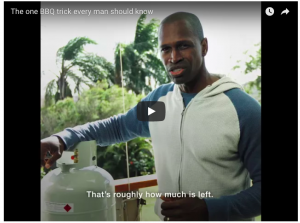
Truth bomb: I never unmute a video ad. I have ZERO time to watch a video ad, because, honestly, short attention span. So I love how Movemeber turned that (I guess pervasive) trend into a killer campaign. For World Suicide Prevention Day 2017, Movember developed the “Unmute – Ask Him” campaign to show the role friends and family can play in supporting men struggling with mental health.
The campaign used videos across social media with men doing average things – fishing, changing a tyre, BBQ’ing – overlaid with subtitles. But, when the video was unmuted the viewer could hear what the men are really talking about. Powerful, to say the least.
Check out the amazing videos here.
WWF: Last Selfie
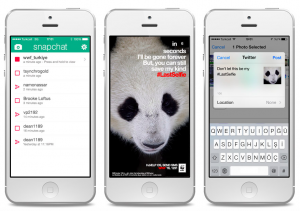
Snapchat may be going through a particularly tough time of late, but last year it was used brilliantly by WWF Denmark. The organisation harnessed the two prized features – for both nonprofit storytelling/donations & Snapchat – imagery and immediacy, to launch their “#LastSelfie” campaign.
WWF shared a series of animal close-ups and the slogan, “Don’t let this be my #lastselfie” to highlight the plight of extinction for these species. The fact that the snaps vanished not too much later only augmented the sense of urgency, and elevated the visual storytelling.
CrowdRise: Giving Tower
Augmented reality is a great digital tool, but not often used in the nonprofit sector. CrowdRise in the US did use it effectively for  Giving Tuesday last year. They created a “Giving Tower” app, that displayed a virtual tower growing taller each time donations were made to various causes.
Giving Tuesday last year. They created a “Giving Tower” app, that displayed a virtual tower growing taller each time donations were made to various causes.
When a viewer pointed their smartphone cameras toward a flat object, they could see the tower appear in augmented reality. As the donations poured in and the tower grew, it unlocked virtual reality films for supporters to learn more about various causes around the world. The innovative approach raised $6 million for the featured nonprofits.
Worldwide Breast Cancer: Know Your Lemons
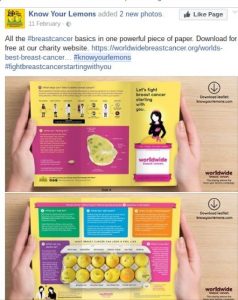 When life gives you lemons, Worldwide Breast Cancer will turn it into a brilliant digital campaign. Built as a member’s page on Facebook, the Know Your Lemons campaign encourages women to check their breasts more regularly, spot physical warning signs (likened to lemon shapes, where the name comes from) and ultimately help save lives.
When life gives you lemons, Worldwide Breast Cancer will turn it into a brilliant digital campaign. Built as a member’s page on Facebook, the Know Your Lemons campaign encourages women to check their breasts more regularly, spot physical warning signs (likened to lemon shapes, where the name comes from) and ultimately help save lives.
The community Facebook group received tremendous response and conveyed a serious subject in a fun way, while creating an actual virtual place for women to share their stories and get information. The campaign has built a thriving community and also exceeded fundraising target.
